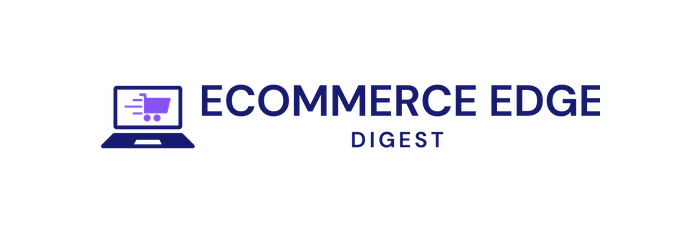
Every standout product on a shelf-or on a screen-represents a series of choices made under uncertainty. Product selection is where intuition meets evidence: the quiet pulse of market signals, the hard edges of constraints, and the soft lines of customer desire. It is not simply about picking winners; it is about assembling a coherent portfolio that reflects a brand’s promise, a segment’s needs, and the realities of supply, timing, and risk. This article decodes that intersection of art and science. We explore how qualitative judgment and pattern recognition complement quantitative models, how jobs-to-be-done, cohort behavior, and price elasticity inform assortment, and how to navigate trade-offs among breadth, depth, and differentiation. We look at the role of experiments, proxy metrics, and post-mortems in reducing uncertainty, and at the operational details-vendors, lead times, unit economics-that quietly shape what is possible. From direct-to-consumer catalogs to B2B roadmaps, the principles travel: define the problem precisely, separate signal from noise, decide with clarity, and iterate with humility. The goal is not a magic formula, but a practical toolkit for making better bets-consistently, transparently, and with respect for both the spreadsheet and the story.
Clarifying Demand Through Customer Jobs Pains and Gains to Define Selection Criteria
Start with the work customers are trying to get done, then trace the frictions that slow them and the outcomes they crave. Map situations, triggers, and desired results so every insight can be turned into a measurable rule: reduce time-on-task, eliminate rework, increase confidence, or compress variability. When patterns repeat across segments and contexts, codify them into crisp selection standards-signal strength, problem intensity, success criteria, and acceptable trade-offs-so ideas compete on the same field.
Translate pains and gains into evidence-backed thresholds: define minimum relief, target uplift, and proof requirements before you shortlist options. Weight criteria to reflect market urgency and strategic fit, not just novelty. Then score candidates consistently, using a simple grid to compare how well each option resolves the job, neutralizes the pain, and unlocks the gain-while respecting viability limits like cost, timing, and complexity.
- Job: Get groceries fast after work
- Pain: Long checkout lines, out-of-stock staples
- Gain: Guaranteed freshness, 30-minute pickup
- Job: Close monthly books without errors
- Pain: Manual reconciliations, version chaos
- Gain: Audit-ready exports, automated checks
| Criterion | Why It Matters | Example Measure |
|---|---|---|
| Job Fit | Solves the Core Task, Not a Side Quest | % Steps Removed |
| Pain Relief | Removes the Highest-friction Moment | Min Drop in Errors/Time |
| Gain Magnitude | Delivers Meaningful Upside | Uplift in Success Rate |
| Switching Cost | Ease of Adoption and Migration | Hours to First Value |
| Evidence Strength | Confidence in the Bet | N of Validated Tests |
| Economic Fit | Sustains Margins and Scale | LTV/CAC Threshold |
Designing a Data Driven Scorecard That Balances Desirability Feasibility and Viability
Build your rubric around the triad-what people wont, what you can ship, and what pays-and turn it into a composite index that’s hard on opinions and soft on noise. Start by encoding each dimension as a small set of measurable signals (0-100 scales), normalize them, and apply strategy-weighted coefficients. Use leading indicators (e.g., waitlist conversion) alongside lagging ones (e.g., retention) to avoid myopia; include uncertainty bands so a shiny-yet-thin dataset doesn’t masquerade as truth. The result is a score that reflects today’s data while remaining adjustable as your context shifts.
- Desirability: Search intent trend, problem severity (from qualitative coding), waitlist or beta opt-in rate, task success rate from usability tests.
- Feasibility: Engineering effort (t‑shirt size to points), dependency risk count, data availability/quality index, regulatory/approval complexity.
- Viability: Gross margin model, payback period, TAM x attainable share, pricing power signal (discount sensitivity), cannibalization risk.
| Criterion | Key Metric | Weight | Source | Example |
|---|---|---|---|---|
| Desirability | Waitlist CVR | 0.40 | Site Analytics | 78 |
| Feasibility | Build Effort | 0.30 | Eng. Estimate | 62 |
| Viability | Payback (Mo.) | 0.30 | Finance Model | 71 |
Operationalize with a clear scoring playbook: normalize via min-max or z‑scores, cap outliers, and apply confidence-adjusted scores (e.g., multiply by 0.7 when n is low). Establish gates (e.g., if feasibility < 50 then escalate for mitigation) and a refresh cadence tied to key learnings. Tune weights to strategy (e.g., growth phase may favor desirability 0.5) and guard against bias with portfolio views and post‑decision reviews. Use the composite score to prioritize, not to abdicate judgment-ties can be broken by strategic themes, customer commitments, or risk diversification so the roadmap balances ambition with the ability to deliver and sustain value.
Validating Choices With Lean Experiments Smoke Tests Concierge Tests and Wizard of Oz Prototypes
Treat every promising option as a falsifiable hypothesis, then pick the lightest-weight way to learn. Choose artifacts that expose the riskiest assumption first and measure real behavior, not opinions. A landing page with a price, a hand-run workflow, or an interface that quietly hides human effort can all surface whether people care, whether they’ll pay, and whether the experience actually fits their day.
- Smoke Tests: Lightweight demand checks (e.g., ”Buy” or “Join waitlist”) to validate intent before building.
- Concierge Tests: Deliver value manually to confirm willingness to pay and uncover edge cases.
- Wizard of Oz: Simulate automation behind a real UI to observe usage patterns and UX friction.
- Lean Experiments: Time-boxed, metric-driven probes that escalate or kill ideas based on evidence.
| Method | Primary Signal | Effort | Best For |
|---|---|---|---|
| Smoke | CTR / Signups | Low | Demand |
| Concierge | Payments / Retention | Medium | Value |
| Wizard of Oz | Usage Depth | Medium | UX fit |
Translate signals into decisions with precommitted rules: define a clear hypothesis, a success threshold, and a fixed runway; instrument every step; and debrief with what-to-build and what-not-to-build lists. Use ethical safeguards (transparent follow-ups, refund paths, no dark patterns), apply sample-size sanity to avoid false positives, and keep your kill/pivot/scale gates explicit. The goal isn’t to be clever with experiments-it’s to be fast, honest, and specific about which choice deserves your next unit of effort.
Final Thoughts…
Product selection lives where pattern meets possibility: a practiced eye scanning the horizon, guided by evidence, bounded by context. It is neither a leap of faith nor a spreadsheet exercise, but a rhythm-observe, hypothesize, test, learn-played at the tempo your market will tolerate. When intuition is informed by research, and data is tempered by judgment, the odds shift from hoping to knowing. What endures is a simple discipline: define success before you chase it, reduce uncertainty with small bets, and let real users arbitrate the merits. Constraints-operational, ethical, financial-are not obstacles so much as the frame that gives the picture its shape. As your environment changes, so will your criteria; update both without ceremony. The “right” product is not just selected-it is continuously reselected. It earns its place with evidence, keeps it through relevance, and exits gracefully when the signal says the story has moved on.






